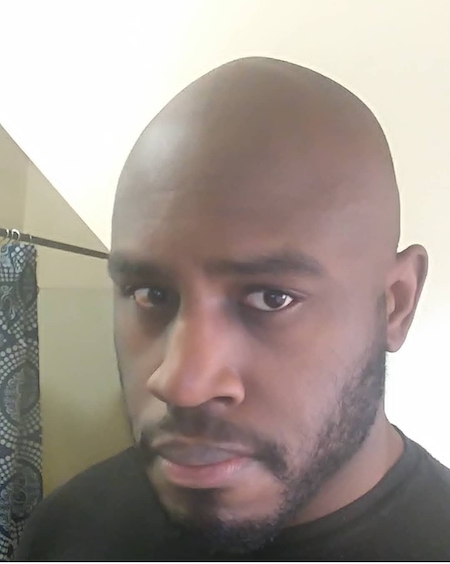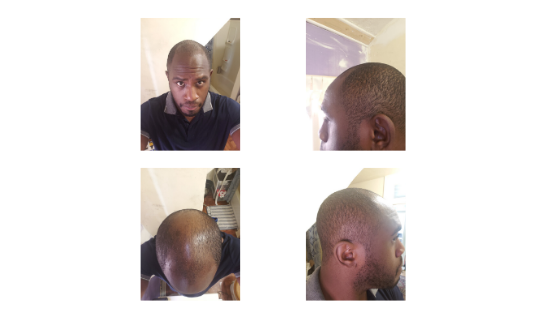One of the most effective ways to reverse hair loss (not just slow down or halt) is the derma roller. However, it’s not promoted nearly as heavily as propecia, rogaine, or hair transplants because it’s not a big source of money. A derma roller for hair can be as little as $40. With that, you can be well on your way to making a serious difference in your hair loss.
I wish I had known about this before I got my hair transplant. While it wouldn’t have produced the same results, you’ll see well this can work. Dermarollers are truly the most cost effective hair loss solution.
Using a derma roller for hair growth: Does it work?
A derma roller is a skincare device that is, quite possibly, the most certain way to regrow hair lost to androgenic alopecia. . The act of using a derma roller is referred to as “derma rolling” or “micro needling.” Throughout this article, the two terms will be used interchangeably.
Well, that’s not the only thing it does.
It’s also used for the general maintenance of your skin. It can treat acne scarring, reduce signs of aging, and of greatest importance to men dealing with male pattern baldness, it can stimulate hair growth and regrowth.
It works by creating micro-injuries within the skin. These micro-punctures cause blood flow to the area where the roller is used and stimulate collagen production. A dermaroller can help treat other hair health ailments, such as:
- Alopecia totalis (complete hair loss of the scalp)
- Alopecia universalis (complete loss of all hair on the body)
- Scarring alopecia (inflammatory condition that destroys hair follicles, causing scarring and permanent hair loss.)
- Androgenetic alopecia (the most common form of hair loss that affects most men and even some women)
- Telogen effluvium (excessive shedding of hair)
- Trichotillomania (the irresistable urge to pull your hair out)
- Tinea capitis (a fungal infection that causes hair loss)
- Pretty much any hair loss.
The best part is that this is a scientifically verified method for regrowing hair. It’s also technically a topical treatment, meaning you don’t have to worry about hormonal side effects that come with something like finasteride.
Another benefit of derma rolling is that works just as for men and women. This is similar to other non-chemical treatments, like low-level laser light therapy.
A Randomized Evaluator Blinded Study of the Effect of Microneedling in Androgenetic Alopecia
A 2013 study titled “A Randomized Evaluator Blinded Study of Effect of Microneedling in Androgenetic Alopecia” compared hair growth between a group that just used a 5% minoxidil solution and one that used a 5% minoxidil solution along with weekly microneedling sessions.
The results were incredible. Directly from the study:
“(1) Hair counts – The mean change in hair count at week 12 was significantly greater for the Microneedling group compared to the Minoxidil group (91.4 vs 22.2 respectively). (2) Investigator evaluation – Forty patients in Microneedling group had +2 to +3 response on a 7-point visual analogue scale, while none showed the same response in the Minoxidil group. (3) Patient evaluation – In the Microneedling group, 41 (82%) patients reported more than 50% improvement versus only 2 (4.5%) patients in the Minoxidil group. Unsatisfied patients to conventional therapy for AGA got good response with Microneedling treatment.”
TL; DR: Microneedling with a derma roller combined with minoxidil resulted in almost 5x as much hair growth and almost everyone who used a derma roller experienced significant growth.

There are two things particularly notable about the results of the derma roller group:
- Using visual assessment, the derma roller + minoxidil group had 22 patients who experienced “moderate improvement” and 18 who experienced “marked improvement.” This means that 36 of 50 patients experienced enough hair growth that it was visibly obvious to people. There were none who experienced this type of growth in the minoxidil-only group.
- Twelve men, unsatisfied with Finasteride and Minoxidil alone in the past, experienced mild or moderate improvement.
This means that micro-needling, combined with minoxidil, is a serious contender for regrowing hair. It’s been proven to work, it’s cheap, and its results are visibly noticeable. Seriously, check out some of the images from the study in the before and after.
That’s why dermarolling is part of my hair retention protocol.
How does dermarolling cause hair regrowth?
There are several proposed mechanisms as to why derma dermarolling causes such rapid growth of hair. If you aren’t interested in the science, skip ahead to the next section. This is for my nerds who want to learn a little more.
Production of collagen
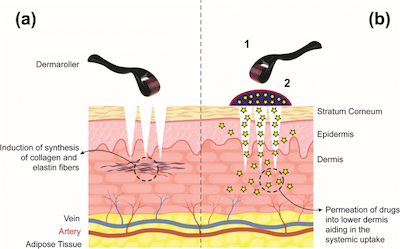
We know that dermarolling causes collagen production. Numerous studies have found that dermarolling increases collagen production (source). What is collagen, and how does it help with hair growth?
Collagen is the most abundant protein in your body and helps makeup tendons, ligaments, and skin
Your body produces collagen, but you can also get it from supplements and foods like bone broth. One of the most recent popular protein supplements is specifically made from collagen peptides.
Collagen does several things for your hair, but the one most relevant to thinning is that it can help repair damaged hair follicles, protect them from free radical damage, and improve scalp elasticity.
All of these contribute to hair growth.
A free dermaroller to help you regrow hair
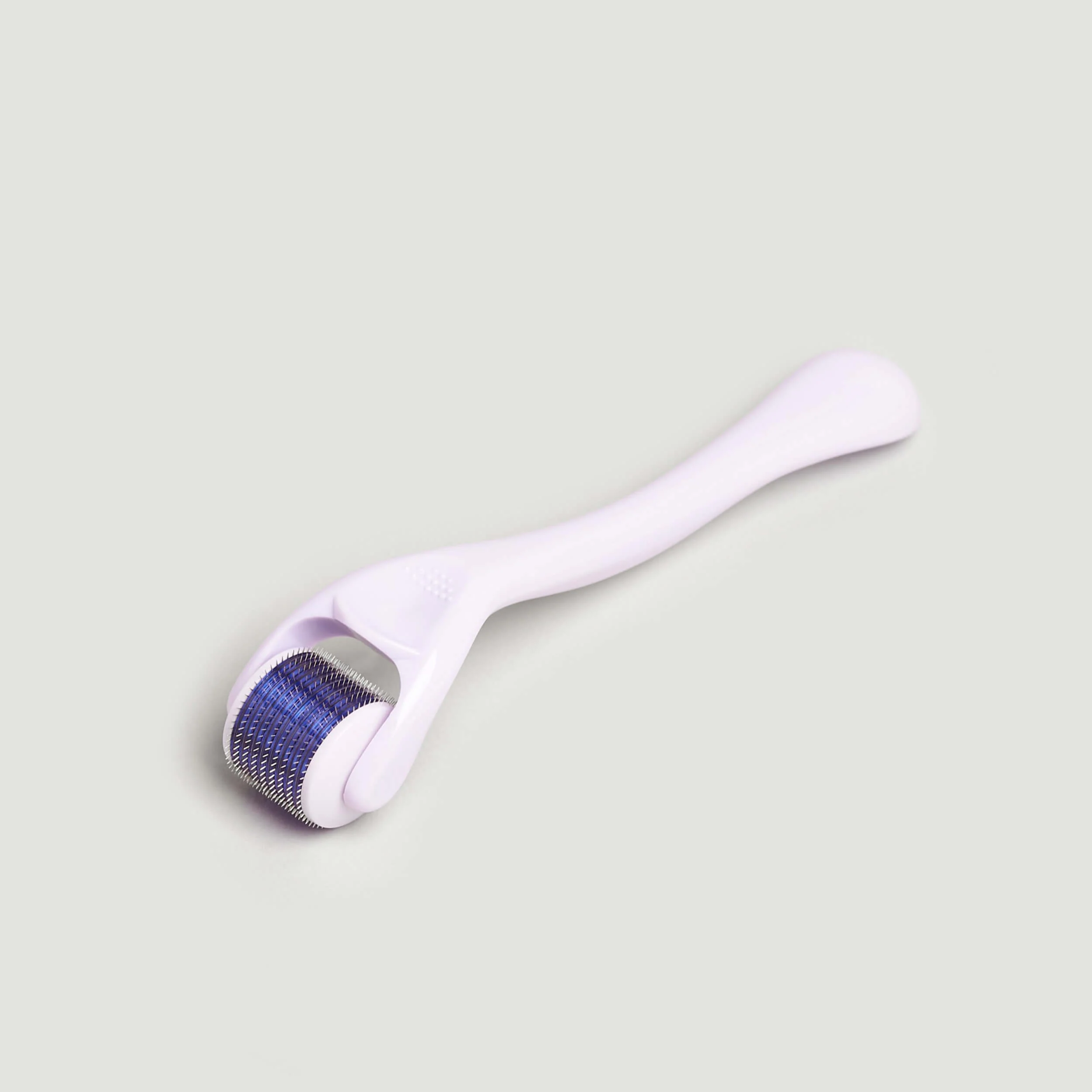
Here’s a limited-time offer from Hairguard. They will ship you a free derma roller. All you have to pay for is shipping.
The science and success stories are all over the internet. Now you can try the dermaroller that’s been designed with the exact specifications as the one used in the studies that have been shown to regrow your hair.
And for free.
Get your free dermarollerStem cell and growth factor production
Dermal papillae are essential for the induction and maintenance of hair growth. They are embedded in a laminin and collagen IV-rich extracellular matrix at the base of the hair follicles. Dermal papillae cells are also androgen receptors.
When the potent androgen dihydrotestosterone (DHT) enters the dermal papillae cells, it binds to the androgen receptors, causing two notable things to happen: downregulation of processes vital to hair growth and upregulation of processes that stop hair growth.
These include the suppression of stimulatory pathways of:
- Wnt: Has been shown to grow hair follicles when elevated and is activated as a growth factor from wounds. (source)
- Stat 3: Stat3 plays an important role in behavior of hair follicle cells. (source)
- Sonic The Hedgehog (Seriously, that’s it’s name. It’s typically called “Shh” for short): Shh signaling contributes to hair growth and dermal papillae formation by regulating the hair follicle formation. (source)
- Beta-catenin: β-Catenin signaling is specifically responsible for hair follicle development, regeneration, and growth, and is expressed in the dermis and promotes anagen induction, duration, keratinocyte regulation and differentiaton.
- Lef1: Lef1 is a key transcription factor in developing fibroblasts that supports hair follicle formation in adult wounds. (Source)
As well as the up-regulation of suppressive growth factor.
Bone morphogenic protein (BMP-4): The growth factor bone morphogenic protein (BMP)-4, plays an important role in suppressing follicular growth and follicle differentiation during the telogen phase by inhibiting anagen (growth phase) induction. (Source)
Dickkopf-1 (Dkk-1): Secreted from dermis papilla cells in response to dihydrotestosterone (DHT), Dickkopf-1 (Dkk-1) is also a potent antagonist to the Wnt signaling pathway. Bone morphogenetic protein 4 (BMP4) protein also acts through the activiation of Dickkopf-pathway, thereby inhibiting hairfollicle growth. (Source)
Dermal papilae cells are also considered a reservoir of multi-potent stem cells called mesenchymal cells.
Step-by-step breakdown of how microneedling works to stop hair loss
Wnt protein, Stat 3, Beta-Catenin, Lef1, and Shh signaling are activated by wounding and participate in every stage of the healing process, from controlling inflammation and programmed cell death to mobilizing stem cell reservoirs within the wound site.
This includes the life and death cycle of the hair follicle.
- Normally, hair follicle regeneration starts with signals from the mesenchyme-derived dermal papillae cells. The transition of telogen follicles into anagen is associated with activating Wnt, Stat 3, and Shh proteins. (Source)
- Microneedling stimulates the mesenchyme stem cells. This stem cell starts the hair follicle cycle by sending a single to the bulge region. . Most of the hair follicle stem cells reside in this area bulge.
- The bulge region is where BMP-4 suppresses the creation of new hair follicles. Mesenchymal cells secrete a BMP-4 antagonist, thus shutting off their supression and causing new hair follicles to grow. This makes sense, as research shows that Wnt works antagonistically on BMP-4. (Source)
- Microneeding causes an uptick in signalling factors associate with hair growth. Specifically beta-catenin and Lef1 (source).
The most notable thing about this process is that it’s capable of causing the scalp to generate new hair follicles from the mesenchymal stem cells as well motivate growth of existing hair follicles.
Now, with all of this good, let’s get to some of the downsides of dermarolling.
What are the cons of microneedling?
Well, it can hurt. After all, you’re causing an injury to your skin. Not a lot, and it’s something you get used to (I have), but it’s never going to be comfortable.
Remember what you’re doing: You are rolling a cylinder with 540 1.5mm stainless steel/titanium micro needles over the top of your scalp. That’s already a sensitive area, and you’re aggravating it even further.
The pain is necessary, as causing micro-injuries stimulates the growth factor, mesenchymal cells, and collagen production. You can use a shorter needle length if the pain and discomfort are too much for you. I currently use a derma roller with 1.5mm length needles, but I started with one that was .5mm long. It hurts less, but it’s not as effective.
Needle size matters because the needles need to be long enough to pierce the other layer of skin and induce collagen production. You must use the same protocol to achieve the same results as the study. You need to use 1.5mm length needles for the best results.
There are many microneedlers available. Most are FDA approved while some aren’t. However, there isn’t enough research out there to know whether or not they’re safe.
In other words, do your own reason (like you’re doing now with this article), don’t be reckless, and take none of this as medical advice.
What to look for in a derma roller
I have no particular loyalty to any one derma roller. Here is the link to the one I use, but as long as they meet the following criteria, any derma roller will do. [Microneedle Roller with 540, 1.5mm Titanium Needles]
There are only 2 things you need to look for when picking on a derma roller.
Length of roller needles
Follow the study protocol and try using a 1.5 mm length titanium or stainless steel needles. Your goal to stimulate hair growth. If you read the explanation of the how microneedling works, you know that you need to puncture the skin surface. If you skipped it, maybe go back. I swear it’s not that thick.
A 1.5mm needle will penetrate deeper into the skin, stimulating blood flow, triggering more growth factor, and causing more of the signaling changes in your scalp to stimulate hair regrowth.
Size of rollers
Because derma rolling originated as a skin care practice, there are three different sizes of rollers, all designed for different parts of your face. Get the largest roller you can, as they are excellent for your head.
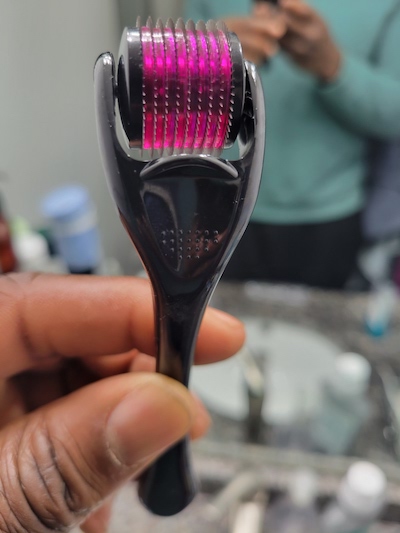
The microneedling procedure to cause hair re-growth
Again, I just followed what the study recommended. From the study:
“A dermaroller of 1.5 mm sized needles was rolled over the affected areas of the scalp in a longitudinal, vertical, and diagonal directions until mild erythema was noted, which was considered as the end point of the procedure. All patients were instructed not to apply Minoxidil on the day of procedure and to resume its application only 24 h after the Microneedling procedure.”
Translation: Go over the area on your scalp where you’re losing hair in an “up and down,” “left and right,” “side to side” pattern until your skin is moderately red and irritated.
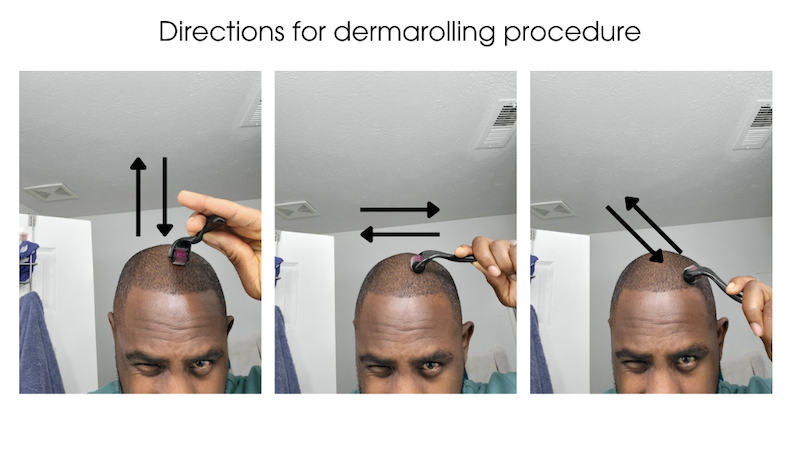
For my brothas out there (or anyone with a darker skin tone), you won’t be able to see your skin turn red. Just got by how irritated it feels, as that will be enough to tell you.
Also, in the same line of discussion, your hair texture doesn’t matter. The scalp roller would produce great effects, regardless of your race of race or ethnicity.
One of the caveats the study warns is that you don’t want to use the minoxidil (or finasteride+minoxidil solution) within 24 hrs of the derma rolling procedure. This is mainly to avoid irritation. This is not medical advice, but I never wait 24 hours after derma rolling to apply my minoxidil+finasteride solution.
The final word on derma rolling to combat male pattern hair loss
It works. Every man in every study had great responses, but you’ve gotta make sure you combine it with minoxidil. I combine mine with the topical finasteride/minoxidil combination. I feel like this has supercharged my results.
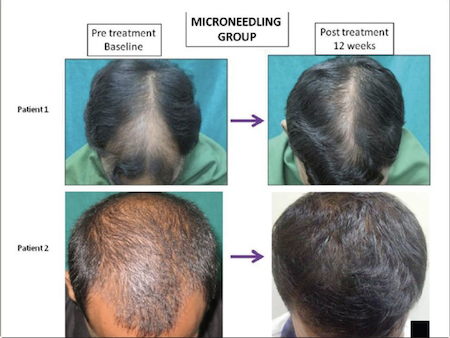
Remember, I already got a hair transplant, but that doesn’t protect the hairs that weren’t transplanted from falling out. The transplant hair is protected from DHT, but the other stuff can still go, but I’ve got my hair thickness pretty high adding this tactic to my hair care regime.
If you want to see the rest of my hair loss prevention and retention protocol, check it out here. Otherwise, the rest is up to you.


